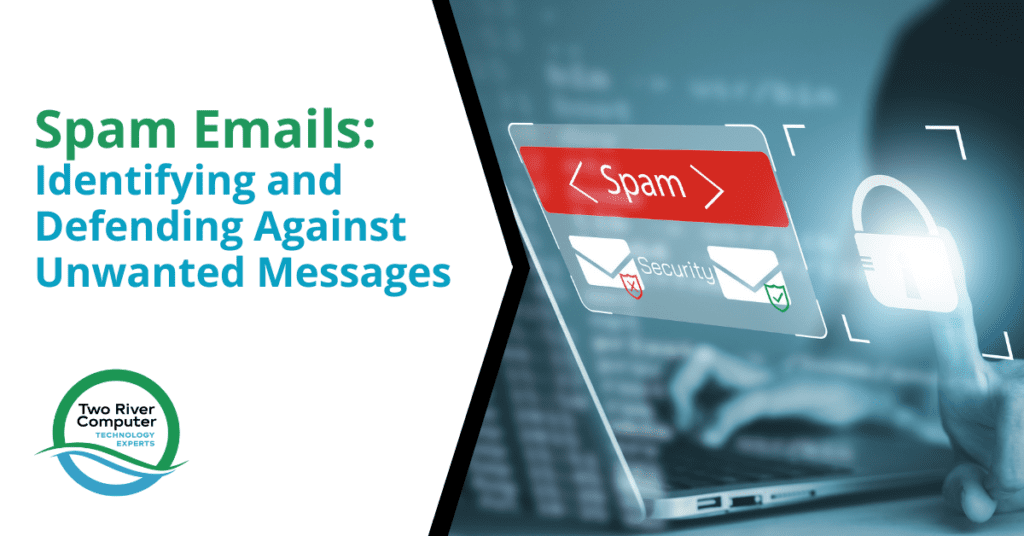
In the age of digital communication, our email inboxes serve as vital gateways to our professional and personal lives. However, lurking amidst the legitimate messages are spam emails, those unsolicited and often nefarious messages that have the potential to cause significant disruptions and security concerns.
In this comprehensive guide, we will explore the world of spam emails, how to identify them, and most importantly, how to defend against these unwelcome digital intruders.
What are Spam Emails?
Defining Spam Email
Spam emails are unsolicited and often irrelevant or inappropriate messages sent over the internet to a large number of users, for the purposes of advertising, spreading malware, or other malicious intentions. They can inundate your inbox, cluttering it with nuisance or worse.
Types of Spam Emails
- Commercial Spam: These emails promote products or services.
- Phishing Emails: Aim to deceive recipients into revealing personal or financial information.
- Malware Spam: Carry attachments or links that, if clicked, could infect your computer with malware.
- 419 Scams: Advance-fee fraud or Nigerian prince scams.
How to Spot Spam Emails
Recognizing the Red Flags
- Generic Greetings: Spam emails often begin with generic greetings like “Dear User” or “Hello.”
- Suspicious Email Addresses: Check the sender’s email address, as it may appear irregular or unrelated to the purported sender.
- Misspelled Domains: Fraudulent emails may contain misspelled domains or subtle alterations in the website addresses.
- Urgent Language: Spam often employs urgent language, urging you to act immediately.
- Requests for Personal Information: Be wary of emails requesting sensitive information such as passwords or financial data.
Analyzing Links and Attachments
- Hover Over Links: Hover your mouse pointer over links without clicking to see the actual URL.
- Email Attachments: Don’t open attachments from unknown or untrusted sources.
Check the Email’s Header
- Full Header: Examine the email’s header information to verify the sender’s authenticity.
- Email Routing: Check the path the email took to reach you. Anomalies could indicate spam.
The Dangers of Spam Emails
Cybersecurity Threats
- Phishing Attacks: Spam emails may lead to phishing sites aiming to steal personal information.
- Malware Infections: Clicking on links or downloading attachments can introduce malware into your system.
- Identity Theft: Some spam emails aim to steal personal information for identity theft.
Data and Financial Loss
- Financial Scams: Spam emails often include scams targeting financial loss.
- Ransomware: Ransomware attacks may encrypt your data and demand a ransom for its release.
Defending Against Spam Emails
Use a Reliable Spam Filter
Employ a reputable spam filter to automatically identify and move spam emails to a designated folder.
Avoid Clicking Unverified Links
Exercise caution when clicking on links in emails, particularly those that appear suspicious.
Be Wary of Downloading Attachments
Only download email attachments from trusted sources. Scan them with antivirus software if in doubt.
Never Share Sensitive Information
Never provide personal or financial information in response to an email, especially if it’s unsolicited.
Report Spam
Most email providers offer the option to report spam. Use this function to help improve the email filtering system.
Educate Yourself and Others
Stay informed about the latest spam tactics and educate your family and colleagues about spam dangers.
Protect Yourself Today
Spam emails are a persistent threat in the digital realm, often hiding in plain sight in our inboxes. Identifying these unsolicited and potentially harmful messages is the first step in defending against them. By recognizing the red flags, verifying email headers, and using reliable spam filters, you can significantly reduce your risk of falling victim to spam emails.
At Two River Computer, we understand the importance of safeguarding your digital presence. We offer comprehensive solutions to protect against spam and other cybersecurity threats. To learn more about how our services can benefit you, please don’t hesitate to contact us. We’re here to help you navigate the digital landscape with confidence and security.


